Porta Napoli in Lecce
Lecce, a city rich in history and culture, is famous for its artistic heritage, especially thanks to the magnificent Baroque style that characterizes it. Among the many monuments that embellish this city, Porta Napoli is usually the “first” that is visited by those who go to the city.
The “first” because it is located right at the entrance to the historic center and represents the closest gate to the entrance of the city. Lecce has in fact several “gates” that mark its historical boundaries:
- Porta Rudiae, which led to the road to Rudiae,
- Porta San Biagio, which connected Lecce to the road to the inner Salento,
- Porta Napoli, which overlooks the road that leads to Naples and the entire South.
- Porta San Martino, to the north, was destroyed in the nineteenth century because it was believed that its beauty was such that it would overshadow the old Palazzo d’Intendenza, now the seat of the Prefecture.
Each gate is a witness to different eras, to the growth of the city and its changes.

Brief historical notes
The Porta Napoli monument is nothing more than a triumphal arch located in the small square of the same name and built in 1548. Its construction, ordered by the nobleman Loffredo Ferrante from Lecce and probably carried out by the architect Gian Giacomo dell’Acaya, was dedicated to the emperor Charles V of Habsburg, emperor of the Holy Roman Empire, who had previously built a series of structures to defend the town.
The Porta Napoli monument is composed as follows: the gate has no walls and is open. At the beginning it was not exactly like this, so much so that the structure served as a security monument that prevented (together with Porta Rudiae and Porta San Biagio) the entry into the city by foreigners or in any case enemies.
Architectural aspects
In order to give it an appearance of strength and majesty, the gate was built in Baroque style, like most other monuments in Lecce, with a façade rich in decorations and ornaments that reflected the pomp and elegance of the period, with an imposing round arch, flanked by two made in elegant and slender Corinthian style. The central pediment pays homage to the coat of arms of the House of Habsburg, which is the prominent architectural element of the entire building and is accompanied by depictions of Romanesque cannons and armor.
The eulogy to the emperor is completed by a wording in his honor, engraved in Latin in the stone just below the imperial coat of arms. The testimony refers to the bloody battle against the Turks that in 1480 devastated the Salento area, tamed precisely by the Habsburg emperor. It is no coincidence that it is still considered one of the bloodiest events that struck Salento in its history.
Its function today
Today, Porta Napoli is not only a historical monument, but also a symbol of cultural identity for the people of Lecce. Porta Napoli towers imposingly over Piazza Napoli, which has recently undergone careful urban redevelopment and has become one of the major meeting places for Lecce’s nightlife, as well as an important cultural reference point, given the presence of several university campuses in its immediate vicinity.
It is worth noting that Porta Napoli is positioned in front of another very ancient and representative monument of the city: the Obelisk. It is a column entirely built in Lecce stone, with a parallelepiped on top, on whose sides rests a dolphin biting a crescent moon, symbol of the province.

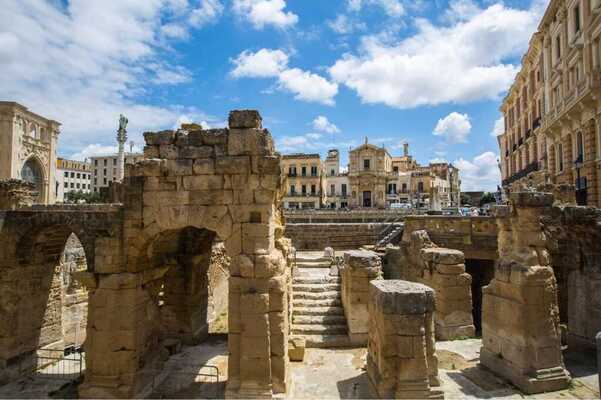
Lecce: the “Florence of the South”
An irresistible combination of history and magic, palaces and churches, monasteries and convents will welcome you in Lecce also known as "Florence of the South" due to its baroque style.
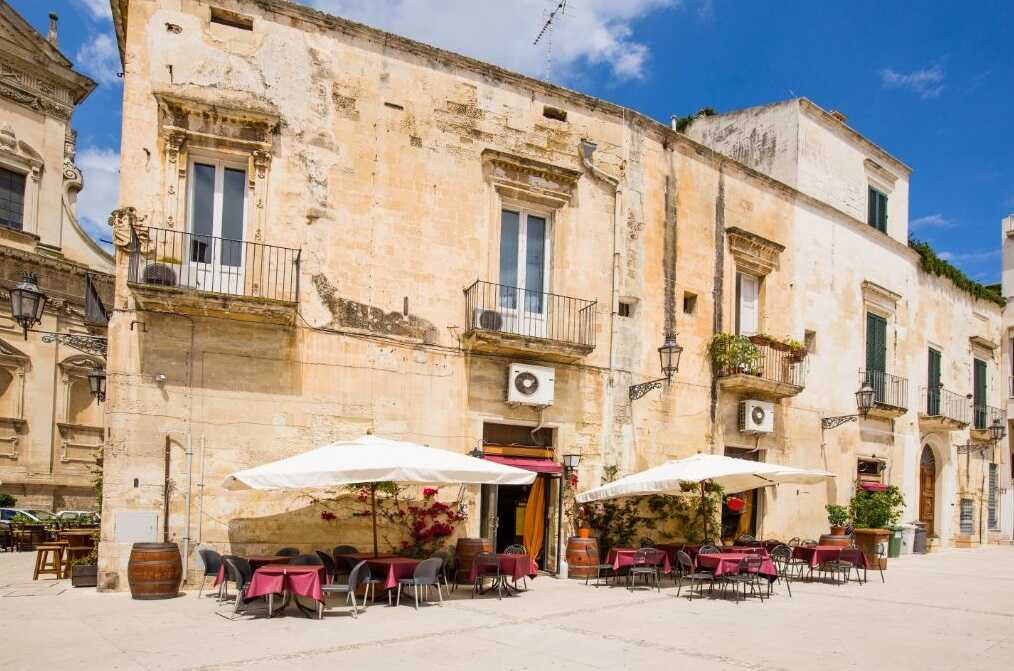
Historic center of Lecce
Lecce, known as the “Florence of the South“, is one of the most fascinating destinations for those visiting Salento. With its thousand-year history, its fascinating mix of baroque art and centuries-old traditions, the historic center of the city offers a unique experience that captures the heart of every tourist. If you are traveling in Salento, […]
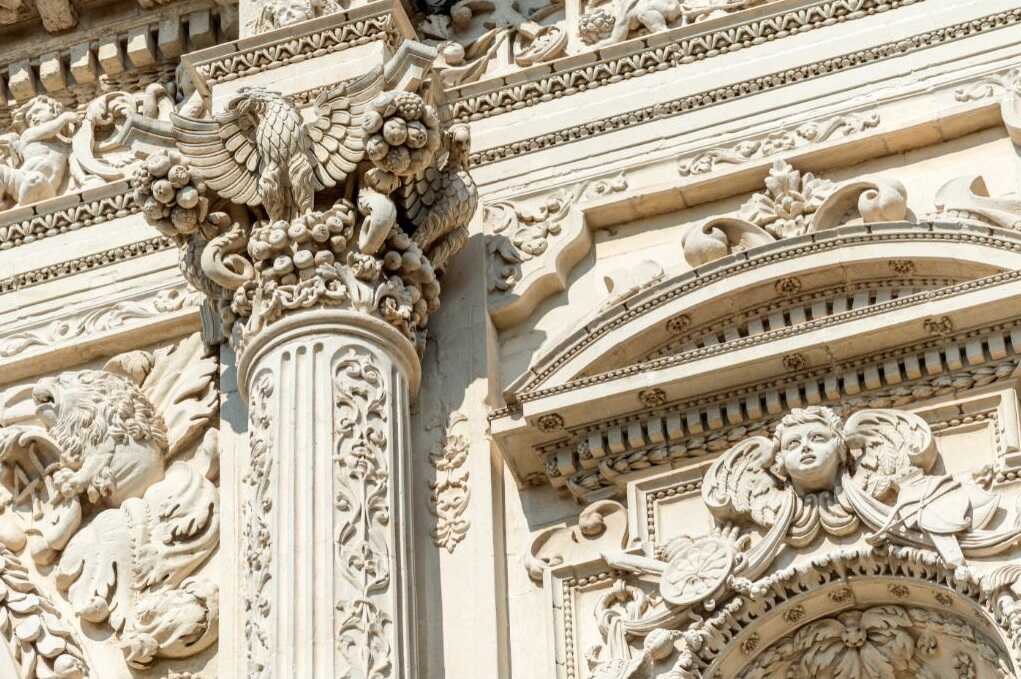
One-Day itinerary in Lecce
What to do in Lecce in one day? Among churches, abbeys, amphitheatres, squares and museums... it is possible to follow an itinerary that will give you a 360-degree experience of this wonderful Apulian city.
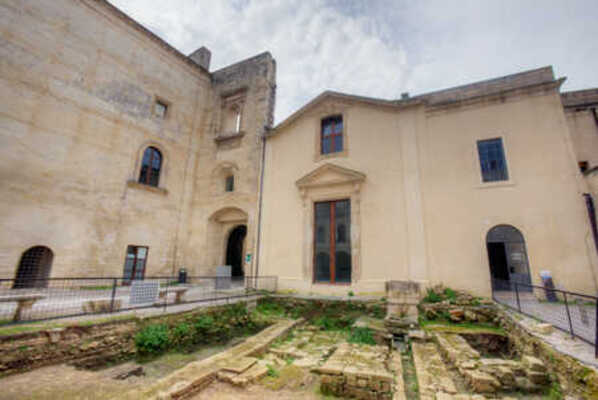
Carlo V Castle in Lecce
Among the many wonders that the city of Lecce hosts, we cannot forget the Carlo V Castle, which stands a short distance from the famous Piazza Sant'Oronzo, a must-visit place for anyone who finds themselves in the splendid baroque city.
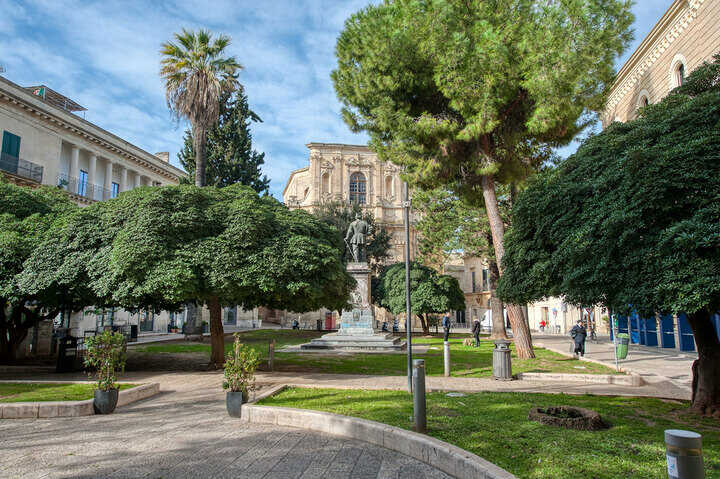
Piazzetta Santa Chiara – Lecce
In the heart of Lecce, one of the most fascinating cities in Puglia, there is a corner that embodies all the magic and history of Lecce’s Baroque style: Piazzetta Santa Chiara. This small and evocative urban space is not just a point of passage, but a real meeting and entertainment place, a privileged location for […]
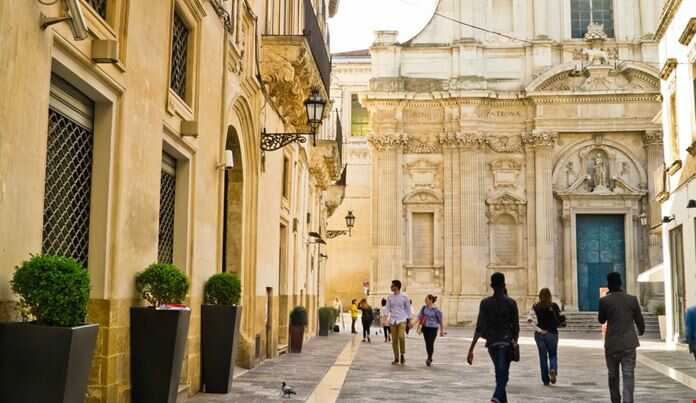
Shopping in Lecce
Lecce, the capital of the Baroque Salento, is the favorite destination for tourists visiting Salento. The city offers its visitors not only an unparalleled historical and cultural wealth, but also a shopping experience that combines style, tradition and quality. Walking through the streets of the historic center, among historic buildings and elegant squares, you can […]


